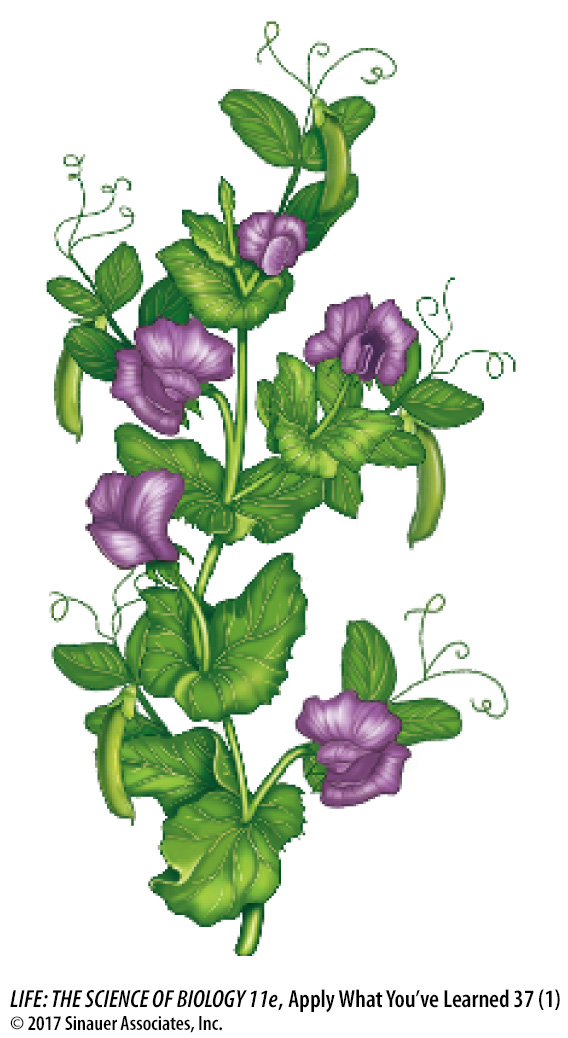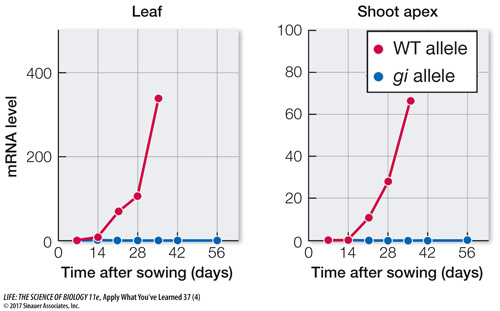Apply What You’ve Learned
804
Review
37.2 Receptors for the photoperiodic signal for flowering are located in the leaf, and a signal travels to the apical meristem.
37.2 Although in terms of flowering, plants are classified as either short-
Original Papers: Beveridge, C. A. and I. C. Murfet. 1996. The gigas mutant in pea is deficient in the floral stimulus. Physiologia Plantarum 96: 637−645.
Hecht, V. et al. 2011. The pea GIGAS gene is a FLOWERING LOCUS T homolog necessary for graft-

The garden pea (a long-
The gigas (gi) allele in peas is a mutant version of an FT gene and encodes an FT-
| Photoperiod (hours of light) | |||
|---|---|---|---|
| Strain | 12 | 16 | 24 |
| gi mutant | 54 | 43 | Veg. |
| WT | 20 | 16 | 15 |
A grafting study was done to test whether the gi mutant was deficient in the ability to produce the floral stimulus molecule. Stems from 6-
| Graft partners (root/stem) | Node at first flowering |
|---|---|
| WT/WT | 15 |
| gi/gi | Veg. |
| gi/WT | 17 |
| WT/gi | 16 |
The graphs (below) show the transcript levels (mRNA expression) of the WT allele (red circles) and the gigas allele (blue circles). Values are shown for both an open leaf and for the apex, or site of flowering. The tests were done on long-

Questions
Question 1
Based on the data in Table A, what is the effect of the gi mutant on flowering in the pea plant?
The gi mutant inhibits or greatly delays flowering in the pea plant.
Question 2
Based on the data in Table B, is it likely that the gi mutant is deficient in a mobile floral stimulus molecule? Provide evidence for your conclusion.
Yes, the evidence suggests that the gi mutant is unable to produce the floral chemical. When only the gi mutant is present (gi/gi), flowering never occurs. But whenever the WT is present, flowering does occur. This suggests that only the WT contains the floral chemical and that it is able to move in both directions (from stock to scion, or vice versa), causing the signal to reach the apex of the plant and stimulate flowering.
Question 3
Develop a model describing the pathway of genetic control of flowering in long-
Under long-